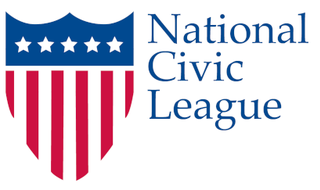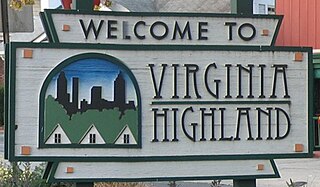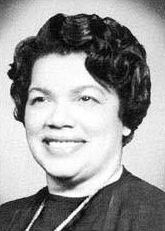Related Research Articles

The National Civic League is an American nonpartisan, non-profit organization founded in 1894 as the "National Municipal League," it adopted its new name in 1937. Its mission is to advance civic engagement to create equitable, thriving communities. To upgrade quality and efficiency of government in cities it enlists the business and professional classes, and promotes greater involvement in government. It also sought create merit-based systems for selecting public officials. The League envisions a country where the full diversity of community members are actively and meaningfully engaged in local governance, including both decision making and implementation of activities to advance the common good. It also promotes professional management of local government through publication of "model charters" for both city and county governments.

The City Beautiful movement was a reform philosophy of North American architecture and urban planning that flourished during the 1890s and 1900s with the intent of introducing beautification and monumental grandeur in cities. It was a part of the progressive social reform movement in North America under the leadership of the upper-middle class, which was concerned with poor living conditions in all major cities. The movement, which was originally associated mainly with Chicago, Cleveland, Detroit, Kansas City and Washington, D.C., promoted beauty not only for its own sake, but also to create moral and civic virtue among urban populations.

Community organizing is a process where people who live in proximity to each other or share some common problem come together into an organization that acts in their shared self-interest.

The city of Chicago is divided into 77 community areas for statistical and planning purposes. Census data and other statistics are tied to the areas, which serve as the basis for a variety of urban planning initiatives on both the local and regional levels. The areas' boundaries do not generally change, allowing comparisons of statistics across time. The areas are distinct from but related to the more numerous neighborhoods of Chicago; an area often corresponds to a neighborhood or encompasses several neighborhoods, but the areas do not always correspond to popular conceptions of the neighborhoods due to a number of factors including historical evolution and choices made by the creators of the areas. As of 2020, Near North Side is the most populous of the areas with over 105,000 residents, while Burnside is the least populous with just over 2,500. Other geographical divisions of Chicago exist, such as the "sides" created by the branches of the Chicago River, the wards of the Chicago City Council, and the parishes of the Roman Catholic Church.

Virginia–Highland is an affluent neighborhood of Atlanta, Georgia, founded in the early 20th century as a streetcar suburb. It is named after the intersection of Virginia Avenue and North Highland Avenue, the heart of its trendy retail district at the center of the neighborhood. The neighborhood is famous for its bungalows and other historic houses from the 1910s to the 1930s. It has become a destination for people across Atlanta with its eclectic mix of restaurants, bars, and shops as well as for the Summerfest festival, annual Tour of Homes and other events.
Community building is a field of practices directed toward the creation or enhancement of community among individuals within a regional area or with a common need or interest. It is often encompassed under the fields of community organizing, community organization, community work, and community development.
In the late 19th and early 20th centuries, African American organized crime emerged following the first and second large-scale migration of African Americans from the Southern United States to major cities of the Northeast, Midwest, and later the West Coast. In many of these newly established communities and neighborhoods, criminal activities such as illegal gambling, and speakeasies were seen in the post-World War I and Prohibition eras. Although the majority of these businesses in African American neighborhoods were operated by African Americans, it is often unclear the extent to which these operations were run independently of the larger criminal organizations of the time.

The Old Fourth Ward, often abbreviated O4W, is an intown neighborhood on the eastside of Atlanta, Georgia, United States. The neighborhood is best known as the location of the Martin Luther King Jr. historic site.
Urban Appalachians are people from or with close ancestral ties to Appalachia who are living in metropolitan areas outside of the region. Because migration has been occurring for decades, most are not first generation migrants from the region but are long-term city dwellers. People have been migrating from Appalachia to cities outside the region ever since many of these cities were founded. It was not until the period following World War II, however, that large-scale migration to urban areas became common due to the decline of coal mining and the increase in industrial jobs available in the Midwest and Northeast. The migration of Appalachians is often known as the Hillbilly Highway.
African-American neighborhoods or black neighborhoods are types of ethnic enclaves found in many cities in the United States. Generally, an African American neighborhood is one where the majority of the people who live there are African American. Some of the earliest African-American neighborhoods were in New Orleans, Mobile, Atlanta, and other cities throughout the American South, as well as in New York City. In 1830, there were 14,000 "Free negroes" living in New York City.
Summerhill is a neighborhood directly south of Downtown Atlanta between the Atlanta Zoo and Center Parc Stadium. It is bordered by the neighborhoods of Grant Park, Mechanicsville, and Peoplestown. Established in 1865, Summerhill is one of Atlanta’s oldest neighborhoods and part of the 26 neighborhoods making up the Atlanta Neighborhood Planning Unit system.

Leon E. Bates Sr. was an American labor union leader with the United Auto Workers union (UAW) from 1937 to 1964 when he retired as an "International Representative" of the UAW. He was one of the first African-American union organizers to work for the "UAW-CIO".

Jewish Council on Urban Affairs (JCUA) is a nonprofit organization based in Chicago that mobilizes the Jewish community of the region to advance racial and economic justice. JCUA partners with diverse community groups across the city and state to combat racism, antisemitism, poverty and other forms of systemic oppression, through grassroots community organizing, youth education programs, and community development.

MorningSide is a neighborhood on the east side of Detroit, Michigan. The area is bounded by Harper Avenue and Interstate 94 on the north, Mack Avenue to the south, East Outer Drive and Whittier on the east and Alter Road and East Outer Drive to the west. The local association that shares the name MorningSide with the community is a collaboration of residents working together to take care of this area.
Racial segregation in Atlanta has known many phases after the freeing of the slaves in 1865: a period of relative integration of businesses and residences; Jim Crow laws and official residential and de facto business segregation after the Atlanta Race Riot of 1906; blockbusting and black residential expansion starting in the 1950s; and gradual integration from the late 1960s onwards. A 2015 study conducted by Nate Silver of fivethirtyeight.com, found that Atlanta was the second most segregated city in the U.S. and the most segregated in the South.

The King assassination riots, also known as the Holy Week Uprising, were a wave of civil disturbance which swept across the United States following the assassination of Martin Luther King Jr. on April 4, 1968. Some of the biggest riots took place in Washington, D.C., Baltimore, Chicago, and Kansas City.
The Boulevard House, now the Southwest Detroit Community House, is located in Southwest Detroit, Michigan and situated right on the Boulevard, in the articulation of Mexicantown, Mexican Village, and Hubbard Farms. It is the University of Michigan's settlement house, providing space for praxis among community scholars, community activists and residents. Since it was established in mid-2012, the Boulevard House has been used to create a place-based space to develop projects, engage community and support social change.
Rossana Rodríguez-Sánchez is a Chicago politician and community organizer. She is the alderwoman of Chicago's 33rd ward, having taken office as a member of the Chicago City Council in May 2019. She won election to that office after defeating incumbent Deb Mell in the 2019 Chicago aldermanic elections. She is a member of the Democratic Socialists of America.
My Block, My Hood, My City, also known as M3, is a non-profit organization in Chicago that mentors underprivileged youth through educational programs and field trips. The organization focuses on providing opportunities in STEM, arts & culture, citizenry & volunteerism, health, community development, culinary arts, and entrepreneurship.

Gloria Stockton Pughsley (1916–1997) was a community activist in the North Lawndale neighborhood of Chicago. She was one of the only African American women to serve among the 116 delegates to the Sixth Illinois Constitutional Convention, which authored Illinois' first constitution for 100 years. Before the convention, she founded and for 15 years led the Greater Lawndale Association of Block Clubs, a powerful organization of more than 100 block clubs that effectively blocked many urban renewal efforts in the neighborhood.
References
- 1 2 3 4 5 Seligman, Amanda I. (2019). "Block clubs". In Orum, Anthony M. (ed.). The Wiley-Blackwell Encyclopedia of Urban and Regional Studies. John Wiley & Sons. p. 130. ISBN 9781118568453.
- ↑ "Block Clubs". Chicago Police Department. Retrieved 2023-06-03.
- 1 2 3 Seligman 2019, p. 132.
- 1 2 Flanagan, Maureen A. (2017). "Amanda I. Seligman, Chicago's Block Clubs: How Neighbors Shape the City [Review]". Urban History. 44 (04): 724–725. doi:10.1017/s0963926817000517.
- ↑ Brown, Cameron; Kovari, Victoria (2021). "A Case Study on Democratic Engagement in Detroit, Michigan: Effects of a Department of Neighborhoods and "Block Clubs" on Civic Engagement". National Civic Review. 110 (2). National Civic League. doi:10.32543/naticivirevi.110.2.0037.
- ↑ Brown & Kovari 2021, p. 43.
- ↑ Linkhart, Doug (2009). "Block building: cure for crime, conflicts, and maybe even city budgets". National Civic Review. 98 (4). Retrieved 2023-06-03– via Gale Academic OneFile.
- 1 2 Seligman 2019, p. 131.
- ↑ Zane, Kylie (2017-01-11). "Not in My Back Yard". South Side Weekly. Retrieved 2023-06-03.
- ↑ Maxey, Alva B. (1957). "The Block Club Movement in Chicago". The Phylon Quarterly. 18 (2). Clark Atlanta University.